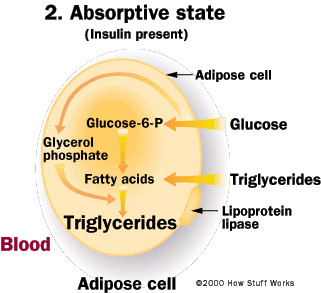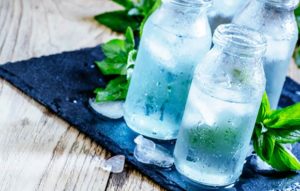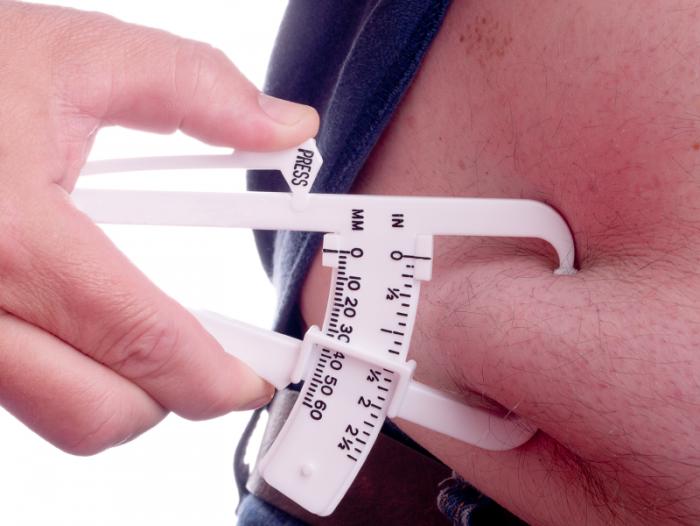Learning How Our Bodies Use Fat is Changing Me
I know a lot about nutrition and exercise. I have always been fat and my family and doctors have always educated me. In the past I was very active, and at one point, I had committed to working out every day for an hour and successfully lost weight. But I had never committed to a lifestyle change. As I have gotten older I have made a lot of changes because I have watched friends and family deal with aging and now I am chronically ill, I have become sensitive to several foods and some medications I have to take require me to do certain things, however I must admit that I have had trouble committing. I have commitment issues…lots of them. You would think that since my wonderful wife, who is the greatest cheerleader I have ever known, helps so many people that she would be the perfect help for me, but when Karen G Clemenson finally comes home, she is drained. This leaves me to myself because I spend a lot to time alone…for several reasons…
Learning how our bodies use fat while I write this self-imposed series (it is one of very few Karen or Jamie hasn’t asked me to write), is going to make me have to choose to stay the same or take full responsibility for my body and what it needs. My body can’t do what I did in my 20’s when dropped 50 lbs, but that doesn’t mean I can’t remain faithful to an altered exercise regime that works for the body I have now; maybe if I do I can eventually gain back some of the mobility, muscle tone and abilities I once had. I must say…it is causing me to think harder and stick to my wellness plan better. I hope it helps you.
Where Fat Cells Live
 The average person can have between 10 to 30 billion fat cells in their body. This number of fat cells is usually set puberty and stays the same through adulthood. Fat cells or adipose tissue lives under our skin, on top of our kidneys, in the liver and on our muscles. Men tend carry fat in their chest, tummy and buttocks. Women usually carry their fat in their breasts, hips, waist and buttocks. Our sex hormones, testosterone and estrogen, dictate where we gain our weight.
The average person can have between 10 to 30 billion fat cells in their body. This number of fat cells is usually set puberty and stays the same through adulthood. Fat cells or adipose tissue lives under our skin, on top of our kidneys, in the liver and on our muscles. Men tend carry fat in their chest, tummy and buttocks. Women usually carry their fat in their breasts, hips, waist and buttocks. Our sex hormones, testosterone and estrogen, dictate where we gain our weight.
How Fat Gets In Our Bodies
When we consume fat it has a long process it must follow:
- Fat enters the intestines through our stomach.
- The intestines emulsify the fat with bile salts from the gall bladder with increase the fat’s surface area.
- Our pancreas releases enzymes called lipases that break down the fat into glycerol and fatty acids and these get absorbed into the lining of the intestine.
- Inside the intestinal cells the fats are put together with a protein coating that makes the fat easier to dissolve in water called chylomicrons.
- Chylomicrons are sent through the lymphatic system until they merge with the veins and pass into the bloodstream. The chylomicrons are only in the blood stream about 8 minutes.
- The lipoprotein lipases found in the walls of blood vessels in fat cells, muscle tissue and heart muscles break down the fats into fatty acids.
- The pancreas sends insulin to tell our cells to either absorb, stop breaking down or start building glycogen from glucose, fats from glycerol and fatty acids and proteins from amino acids. Glycogen and fatty acids are also called triglycerides.
- If the amount of insulin is high in our bodies, our bodies burn the fat.
- If the amount of insulin is insufficient the triglycerides are absorbed into fat cells, muscle cells and liver cells.
Some people are predisposed to have more fat cells than others. Women have more fat cells than men. The number of fat cells we have can increase in our bodies under certain circumstances:
- During puberty
- During pregnancy
- During adulthood when extreme amounts of weight is gained
What Does Our Bodies Do with Stored Fat?
Our bodies are always using energy. When we are not eating, our bodies are not absorbing food and there is very little insulin in the blood. When the insulin is not there to tell the fat what to do, the pancreas, pituitary gland, adrenal gland and thyroid are working to create and emitt hormones to keep our systems running. These hormones use the fat stored in our liver, muscles and fat cells.
When we use our muscles and we are using more calories/energy than we are consuming, our bodies create 2 enzymes: lipase and adipose glyceride lipase when break down triglycerides in our fat cells and they are released into the bloodstream and delivered where energy is needed. When these triglycerides or lipases are released the fat cells get smaller (remember we don’t burn fat cells we burn lipids). When we have empty fat cells our muscle tone can show off but if we overeat later on our fat cells will GLADLY grow back to the larger size or larger.
We lose weight when we exercise because when we burn up those triglycerides for energy our bodies create waste products like carbon dioxide and water. These elements can be eliminated from our bodies through breathing them out, sweating, urinating or having bowel movements.
Proof That Diets Can’t Work Longterm
Our fat cells create a hormone called leptin. Leptin’s job is to tell our brains (the hypothalamus) that we are full so we will not overeat. People who are obese have much larger fat cells which creates more leptin. When we overeat the excess sugar in our bloodstream cannot be managed by the amount of insulin our body creates. For people who are obese the extra blood sugar causes our brains to miss the message to stop eating and we feel as though we need to eat more, all the extra leptin in our bodies also makes us feel like we need to conserve our energy so we feel tired.
 When we use the word “diet,” unless we are referring to the way we have committed to eat our food, we are going to fail. “Diets” don’t work for people who have become obese because once our fat cells have learned to be large and in charge…they are in fact in charge. The imbalance in our hormones changes us forever; we will always crave foods that are not the best for our bodies, we will always have a tendency to want to overeat because the fat cells will do anything to stay in charge. In order to see long-term success in obtaining and maintaining a healthy body, we must have several key elements: a great support system, a dynamic wellness plan and a few rules to help us be successful:
When we use the word “diet,” unless we are referring to the way we have committed to eat our food, we are going to fail. “Diets” don’t work for people who have become obese because once our fat cells have learned to be large and in charge…they are in fact in charge. The imbalance in our hormones changes us forever; we will always crave foods that are not the best for our bodies, we will always have a tendency to want to overeat because the fat cells will do anything to stay in charge. In order to see long-term success in obtaining and maintaining a healthy body, we must have several key elements: a great support system, a dynamic wellness plan and a few rules to help us be successful:
- Avoid processed foods
- Eat soluble fiber – YOU MUST EAT YOUR VEGETABLES
- We must get regular exercise
- Do whatever you have to do to get good sleep
- Lower triglyceride intake – eat less easy carbs and useless fat
- EAT YOUR VEGETABLES
- Swap your bad fats for good fats when you can
- Cut out sweets as much as you can
- Eat lean protein
- Drink lots of water
There is no quick fix. You just have to decide to make a lifestyle change and do it. Being obese is not caused by greediness, lack of willpower or being lazy. Being obese changes the chemicals in our bodies and we must learn new behaviors to change our path toward chronic disease, pain and everything that comes with being obese.
If you need some help mapping any of this out, I recommend you contact my wife, Karen G Clemenson. Contact Wellness Works NW today to make an appointment for your free initial consultation. We offer Weight Loss Counseling, Fitness Assessments that include a proper BMI per caliper, Diet Plans and Personal Training. At the very least we can offer some encouragement on your path.
A Note About Diet Foods
A lot of naturally high in fat foods that are created as low fat and packaged up for ease of use, may sound like a good idea, but low fat microwave lasagna taste like cardboard. To make up for the yummy fat that was removed, food manufacturers add extra salt and sugar. This extra salt and sugar is easier for our bodies to store as fat than if we ate a smaller portion of the high fat item and committed to regular exercise and movement to get and keep our metabolism moving so it can compensate for occasional high calorie meals.
The best thing you can do when trying to slim down is to commit to fueling your body with the best foods possible. Choose low calorie, high fiber foods for your diet. Eat your vegetables; if you don’t like vegetables find creative ways to add them to your diet plan so that you can get used to them (spinach is great in a smoothie, in fact you can puree all kinds of veggies and add them to your meals.) Limit foods and beverages high in sugar, salt and fat (like soda, cookies and chips) or remove them from your diet completely, if you can. It may mean that you cut back more and more as you get used to eating better quality foods. Or maybe you limit your intake of these “treats” to special occasions or your designated “treat day.” Whatever you do, start thinking about your food for the day the day before so you can plan for your wellness and not get sideswiped by hunger.
If you have to eat an extra snack, even though you have eaten enough calories for the day, try to limit yourself to fresh fruit or a hard boiled egg or some popcorn with a little olive oil and sea salt on it. Try to always choose the best foods to put in your body. You deserve it.
Foods that will power your body toward wellness are:
- Quinoa and steel cut oats are very filling and nutrient dense.
- Nuts are high in good fats and a handful of them will keep you going at work and play.
- Beans and lentils (I really like golden lentils) are an inexpensive and filling meal.
- Olive, avocado or coconut oil are good fats to cook with or substitute where you use canola and vegetable oils or butter…don’t eat margarine.
- Plain full fat yogurt with fresh fruit is a great meal for after workouts.
- Fish and chicken are lower in fat, but you can also buy well trimmed red meats for high protein meals.
I hope this article helps Fuel Your Wellness. Please leave your comments below.
Read all articles in the series:
- Fat Cells 101: The Basics
- Fat Cells 200: How Our Bodies Use Fat
- Fat Cells 300: Washing Fat Cells
- Fat Cells 405: Fat Cells and Eating Disorders
- Related Article: Knowing When To Detox or Not To Detox…
Resources & Start Learning More at:
- Fit Watch: The Incredible Shrinking Fat Cell: What Really Happens When Body Fat is Burned?
- Healthline: Leptin and Leptin Resistance: Everything You Need to Know
- How Stuff Works: How Fat Cells Work
- Live Strong: What Happens to Fat Cells With Weight Loss?
- Reader’s Digest: Weight-Loss Story: A Day in the Life of a Fat Cell
 Summer D Clemenson co-owns Clemenson Enterprises and Wellness Works NW with her wife, Karen G Clemenson. Their personal motto is Creativity, Honesty & Positivity are a must! This mantra helps them stay community and wellness minded in all they do. Summer also writes poetry and inspirational blogs @ ClemensonEnterprises.com. Her crochet art can be viewed and purchased @ KnottyWares.com & she loves special orders!
Summer D Clemenson co-owns Clemenson Enterprises and Wellness Works NW with her wife, Karen G Clemenson. Their personal motto is Creativity, Honesty & Positivity are a must! This mantra helps them stay community and wellness minded in all they do. Summer also writes poetry and inspirational blogs @ ClemensonEnterprises.com. Her crochet art can be viewed and purchased @ KnottyWares.com & she loves special orders!













